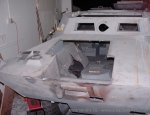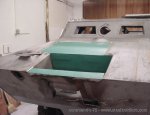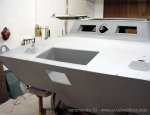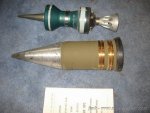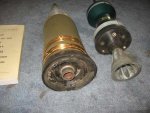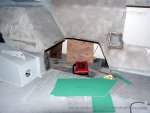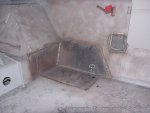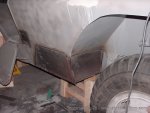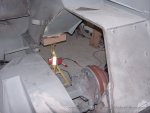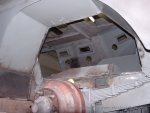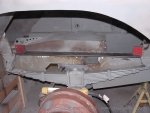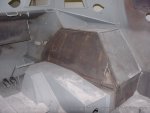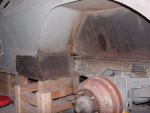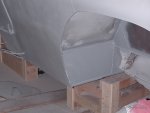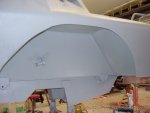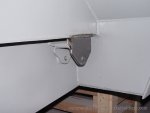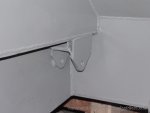The factory welds are softer than the armor. They create vulnerable areas. Most welds on the side(s) have ballistic backup strips, visible on the inside. This may be why the side panels are one piece, then bent.
The damage looks like the result of a rampant AP projectile (aka solid shot). The HEAT and HEP projectiles both detonate on contact... APFSDS (penetrators) have very small cross section. It's possible, perhaps even likely, that a inert TP (Target Practice) projectile of some type did it, perhaps from a field or SP artillery.
Here is a picture of the only 120mm MBT AP projectile I know of. It was used by the Army /Marines M103 Heavy Tank, and in service until 1974. The round is M358 and weighs a whopping 54 lbs. I believe it used a separate case. It has a ballistic windscreen. It is hard to tell if it is capped but I think not. This was the end of the road for solid shot AP tank gun technology - the gun got to big.
The APCSDS-T show next to it is a Abram's 120mm Target Practice sabot, similar to the current combat projectile , though cone stabilized to reduce range , shorter penetrator length and no depleted uranium inside. JimK
AP (Armor Piercing)
APC (AP Capped)
APCBC (APC w/Ballistic Cap)
HEAT (High Explosive Anti - Tank- aka a shaped charge )
HEP (High Explosive Plastic- aka HESH Squash Head)
APFSDS (Armor Piercing Fin Stabilized Discarding Sabot)
APCSDS-T (AP Cone Stabilized Discarding Sabot Tracer)
The M1A1 and M1A2 MBT's 120mm gun uses a variety of penetrators , HEAT, canister, and practice rounds.
http://en.wikipedia.org/wiki/M103_heavy_tank



